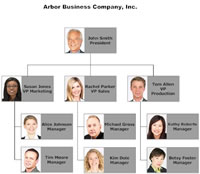
Some would say this is the silver lining to a US economic slowdown, a clean out of global mega-companies that prevent local competitors from entering the market. Starbucks seems to be the first to suffer publicly, with an announcement to close 61 of their 84 stores in Australia. The few stores that they are keeping (for now) are listed in this PDF. Looks like they are focusing on their more profitable inner city markets in Sydney, Melbourne and Brisbane.
Some commentators have had very strong words for Starbucks, particularly Chris Berg from The Age. He wrote an article putting Starbuck’s demise down to the vibrant coffee culture already present in Australia. It seems to me that Starbucks failure is a case of producing a sub-par product, rather than any local competition. Gloria Jeans for example is just as commercialised as Starbucks and has continued to grow rapidly over the last six months, but maybe they get a bit more local help.
Hopefully we are going to see more cases where fundamentally better products prevail. One could argue that GM and Ford are heading down this path too. I am definitely not anti-american either, I would love to work in the US at some stage in my life. I am simply an engineer, so I like to think that the best product will win at the end of the day; regardless of the marketing and sales pitch surrounding it. I have been in business long enough to know this isn’t always true, but cases like this make me feel less naive and more motivated to put that extra bit of effort into everything that I produce.



 A company can only ‘appear’ to be capable of caring if it has invested in systems that ensure each customer interaction is responded to in the best possible way (for both the customer and the company). This requires a lot of business strategy planning and scripting, often using inputs such as customer surveys, psychologists, marketing managers and front line staff. Getting to know your customer clearly takes a lot of time and effort.
A company can only ‘appear’ to be capable of caring if it has invested in systems that ensure each customer interaction is responded to in the best possible way (for both the customer and the company). This requires a lot of business strategy planning and scripting, often using inputs such as customer surveys, psychologists, marketing managers and front line staff. Getting to know your customer clearly takes a lot of time and effort.